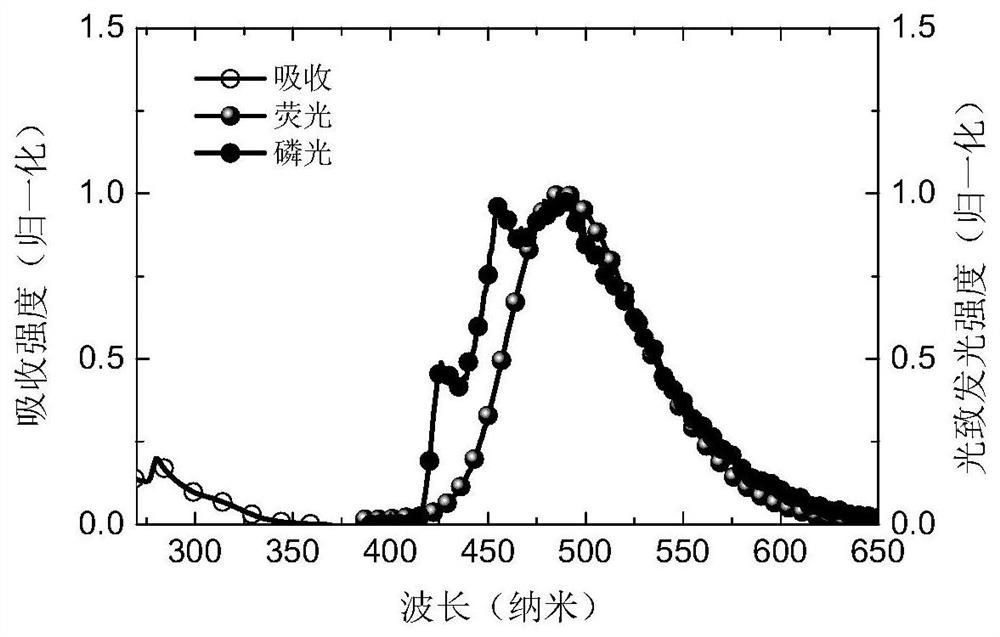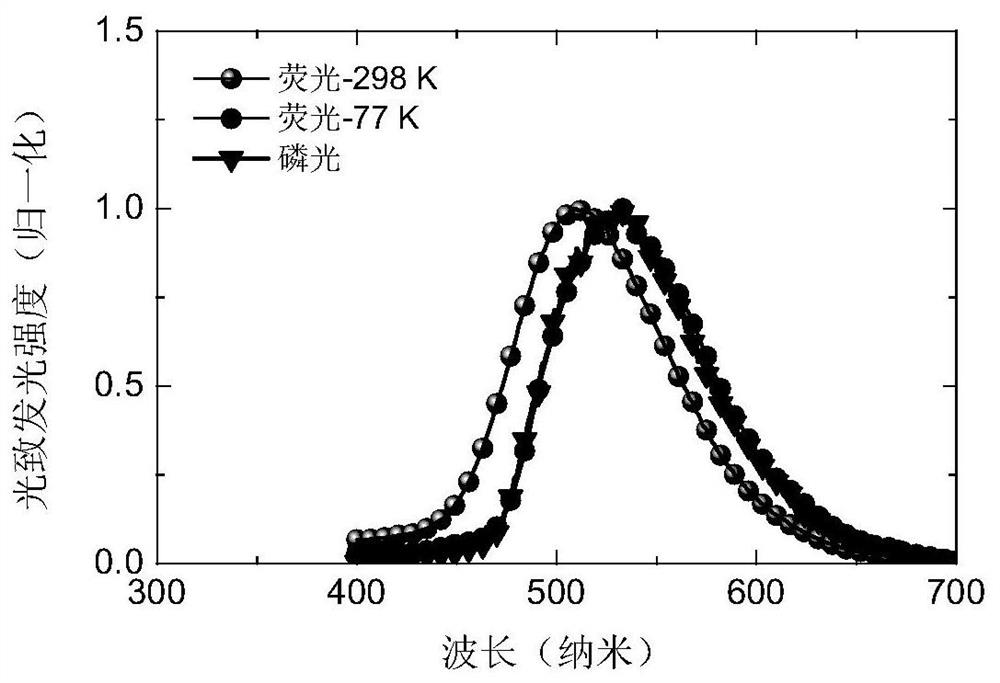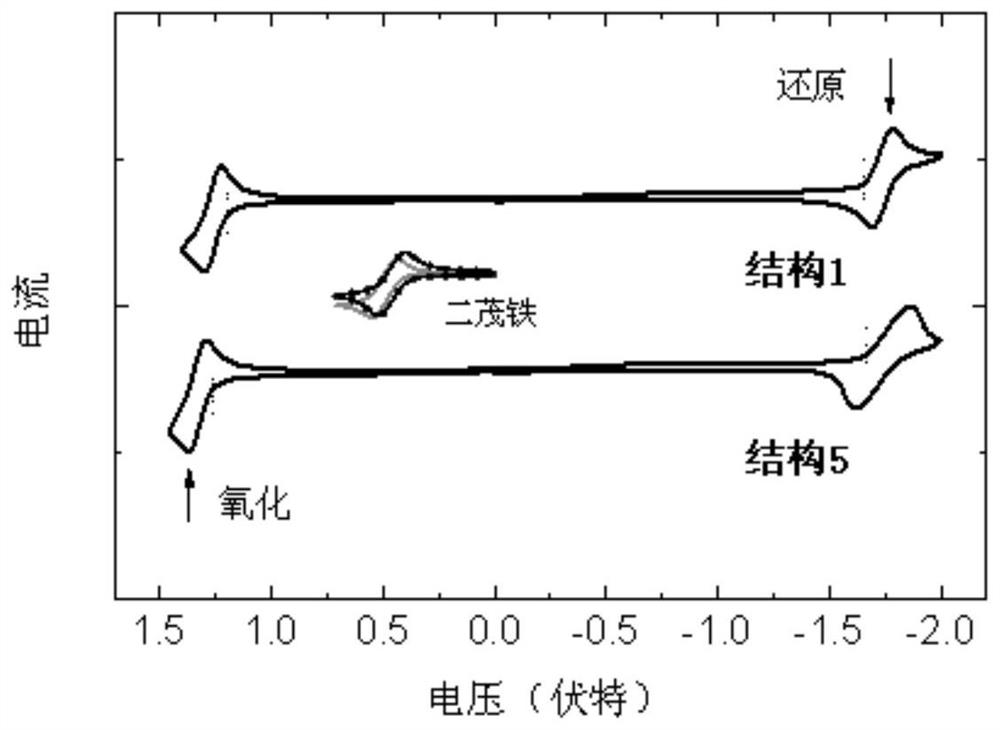A non-aromatic amine high exciton utilization rate small molecule material and its application
A kind of aromatic amine, high exciton technology, applied in the direction of light-emitting materials, organic chemistry, chemical instruments and methods, etc., to achieve the effect of improving exciton utilization rate, molecular weight determination, and simple structure
- Summary
- Abstract
- Description
- Claims
- Application Information
AI Technical Summary
Problems solved by technology
Method used
Image
Examples
Embodiment 1
[0035] The reaction formula of the non-aromatic amine-based high exciton utilization small molecule material of structure 1 in this example is as follows:
[0036]
[0037] The specific reaction steps are as follows: thianthrene-1-boronic acid (3.84mmol, 1.00g), 2-chloro-4,6-diphenylpyrimidine (4.22 mmol, 1.13g), potassium phosphate (19.20mmol, 4.07g), Tricyclohexylphosphine (0.31 mmol, 86 mg), Pd 2 (dba) 3 (0.192 mmol, 176 mg) and 100 mL of 1,4-dioxane were successively added to the reactor, and after passing nitrogen for 15 min, the reaction was heated at 110° C. for 18 h. After the reaction was completed, when the system was returned to room temperature, extraction was performed with dichloromethane and saturated brine, the organic phase was recovered, and the solvent was distilled off under reduced pressure. The crude product was isolated and purified by column chromatography with petroleum ether / dichloromethane 5:1 as the eluent to obtain the product of structure 1 i...
Embodiment 2
[0040] The reaction formula of the non-aromatic amine-based high exciton utilization small molecule material of structure 2 in this example is as follows:
[0041]
[0042] The specific reaction steps are as follows: compared with structure 1, the difference is that thianthene-1-boronic acid is replaced with an equivalent amount of phenoxthi-4-boronic acid, and other raw materials and steps are the same as structure 1. The product of structure 2 was finally obtained in 67% yield. Structure 2 Molecular formula: C 28 H 18 N 2 OS; molecular weight: m / z: 430.53; elemental analysis results: C, 78.12; H, 4.21; N, 6.51; O, 3.72; S, 7.45.
Embodiment 3
[0044] The reaction formula of the non-aromatic amine-based high exciton utilization small molecule material of structure 3 in this example is as follows:
[0045]
[0046] The specific reaction steps are as follows: compared with structure 1, the difference is that thianthene-1-boronic acid is replaced with an equivalent amount of phenoxthi-1-boronic acid, and other raw materials and steps are the same as structure 1. The product of structure 3 was finally obtained in 67% yield. Structure 3 Molecular formula: C 28 H 18 N2 OS; molecular weight: m / z: 430.53; elemental analysis results: C, 78.12; H, 4.21; N, 6.51; O, 3.72; S, 7.45.
PUM
 Login to View More
Login to View More Abstract
Description
Claims
Application Information
 Login to View More
Login to View More - R&D
- Intellectual Property
- Life Sciences
- Materials
- Tech Scout
- Unparalleled Data Quality
- Higher Quality Content
- 60% Fewer Hallucinations
Browse by: Latest US Patents, China's latest patents, Technical Efficacy Thesaurus, Application Domain, Technology Topic, Popular Technical Reports.
© 2025 PatSnap. All rights reserved.Legal|Privacy policy|Modern Slavery Act Transparency Statement|Sitemap|About US| Contact US: help@patsnap.com



